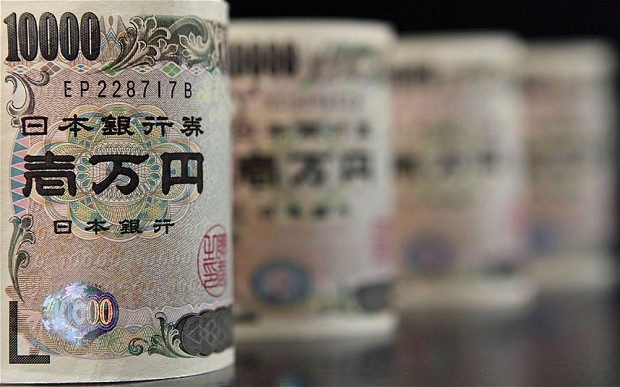Stay Away From Foreign Bonds
Post on: 24 Май, 2015 No Comment

Foreign bond yields look attractive compared to U.S. Treasuries, but don’t be tempted, the risks involved with holding foreign debt are probably not worth it. Investing in foreign debt means not only taking on the default risk but currency risk as well.
There’s a lot going against the dollar right now. The government has to run up historic deficits to fund its stimulus plans, and the Federal Reserve has been trying to combat deflation by flooding the world economy with dollars. Still, the dollar is a reserve currency, and with the rest of the world hurting, the dollar is doing relatively well.
The Powershares DB US Dollar Index Bullish exchange-traded fund (nyse: UUP) was up 5% last year and is up 7% so far in 2009. The appreciation of the dollar against other currencies would eat away at the returns of any foreign bond. Emerging market sovereign debt spreads are 688 basis points above Treasuries –a little less than the dollar’s appreciation this year. The spread between emerging debt and Treasuries is known as the “risk premium.” It represents what investors are paid to take on a country’s default risk rather than risk-free Treasuries. The rising dollar has eaten up the risk premium this year.
The Forbes.com Investor Team also warns that not all sovereign debt is liquid, so retail investors who want this exposure should consider using ETFs. The iShares US JP Morgan USD Emerging Markets Bond Report (nyse: EMB) has a 6.4% yield and charges .60% a year for an index of 38 emerging country bonds. It’s down 2% this year. Powershares Emerging Markets Sovereign Debt Report (nyse: PCY) is cheaper at .50% and has a 7% yield. It’s up 1% year to date.
Vahan Janjigian, chief investment strategist at Forbes, warns that “In my opinion, the U.S. is likely to better weather the global recession than most other countries. I wouldn’t mind having some exposure to China, but their government bond yields are not high enough to entice me.”
Greg Ghodsi of Raymond James agrees that “when you travel the globe the U.S. dollar and Treasuries still look best.” He might buy emerging market debt if the dollar were to start falling, but he would also have a firm stop loss on such investments.
Jeffrey Rubin from Birinyi Associates says that, “One must understand that if Treasury yields start moving higher so will emerging market yields, and with a projected deficit in the U.S. this year of $1.5 trillion that is a real probability and further with the prospect of inflation coming back in the next few years being locked in at current rates will not look very attractive.”
Avoid Foreign Debt
Forbes. The only country with a smaller return is Japan. All nations in the Eurozone are returning better results, as are Britain and Canada. Once you leave, the First World returns get even more attractive. Hungary, for example, had an 8.7% return as of late January. Turkey had an almost 8% return at the same time. Greece had a 5.76% return. (I know these are prices from a month ago and might be a little off today. But they’re in the ballpark.)
What foreign treasuries would you recommend for U.S. investors? How can they get into these bonds? Are there any Second- or Third-World treasuries you actually really like? Which would you avoid like the plague? (I am guessing Russia, for example, would be one place you might want to avoid, despite its 10- year bills returning over 11%.)
Janjigian. When an American investor buys foreign government bonds, he is betting on both sovereign risk and currency risk. I prefer to stay invested in U.S. treasuries. In my opinion, the U.S. is likely to better weather the global recession than most other countries. I wouldn’t mind having some exposure to China, but their government bond yields are not high enough to entice me.
Rubin. I agree with Vahan. There has obviously been a tremendous flight to safety into U.S. treasuries across the entire yield curve and over the past 15 or so months that has been the correct move. With yields on U.S. treasuries at generational lows (late last year the three-month U.S. bill actually traded at a negative yield) it is a natural reaction for individual investors to attempt to capture higher yields by going outside of the U.S. This should not be done.
While the yields you cited do seem, when compared to the U.S. treasury market, attractive, they are only showing one part of the equation. They do not reflect the quickly deteriorating economic situation overseas. Second, it does not account for the currency effect. Year to date the Hungarian currency vs. the U.S. dollar is -23%, Turkey, -10%, Greece -10%, Canada -3%. So while the individual may get the higher coupon, he will lose it and then some on the exchange rate.
If one feels they must invest in overseas treasuries I would suggest the individual does so not directly but via a mutual fund and allow the “experts” to sort through the myriad of laws, currencies, transaction costs and brokers.
Janjigian. And I agree with Jeff–especially about individuals investing through mutual funds if they really want this kind of exposure.
Ghodsi. Buying individual foreign bonds is a risky venture. This market moves quickly and you do not have great liquidity. Even though my preference is to invest in individual securities in this arena, funds are the best way to play. To take advantage of the high yields, I would buy the currency ETFs. Believe it or not, there is one for the ruble (XRU)–buckle up when you look at the chart. The dollar (UUP) still looks the best from the charts I use. The Australian and Canadian dollar are the only currencies that are even close to gaining strength on the U.S. dollar. The Japanese Yen Trust (FXY) is weakening and has been the place to make some money the past few months. So, after you travel the globe the U.S. dollar and Treasuries still look best.

Forbes. Thanks for the tips. I guess I’ll withdraw my prior offering for 10-year Pakistan Treasuries. (Paying 24.77% annually, btw!) So, here’s the logical follow-up. What are some mutual funds/ways I can play foreign treasuries, to get this boost without getting burned? Or is this ALL a bad idea?
Rubin. If an investor for diversification reasons has decided they must invest in foreign bonds, I would invest no more than 5% of my assets in an emerging-markets bond index. I would use an ETF for this purpose, and either EMB or PCY will work each yield over 7%.
Ghodsi. I think the two ETFs Jeff mentions would be a good way to play that market. As I mentioned earlier the individual bonds trade in a very volatile market. My lesson was learned a long time ago when I bought Argentina bonds around par. In a few weeks the bid was 25, and a few weeks after that bid jumped to the 80s. Not the kind of movement an individual investor needs.
Forbes. So Jeff, Would you have to be nuts to want to invest in this kind of overseas stuff? Because the sense I get from you guys is that this is kind of a bad idea.
Rubin. The word “nuts” is strong, I would perhaps say do not ignore the risks involved. Yes, the spread between Turkish bonds, for example, and U.S. Treasuries is attractive–anything paying more than the 2.78% that the 10-year U.S. Treasury is paying now is attractive. But one must understand that if Treasury yields start moving higher so will emerging-market yields, and with a projected deficit in the U.S. this year of $1.5 trillion that is a real probability. And further, with the prospect of inflation coming back in the next few years, being locked in at current rates will not look very attractive in a few years.
Turkey currently yields 17% on its five-year note … at the end of October that rate was 25% … so a move back to there would do some real damage to the return in the next year or two, granted not if held to maturity. But then you have a tremendous currency risk. To sum up … do not chase yield.
Janjigian. I would rather put my speculative money into U.S. stocks, not foreign bonds.
Ghodsi. I agree with Vahan. If the dollar starts to fall, then maybe a position in the emerging market bond ETFs would make sense, but definitely have an exit point. The ETF should provide better liquidity than the individual foreign bonds.














